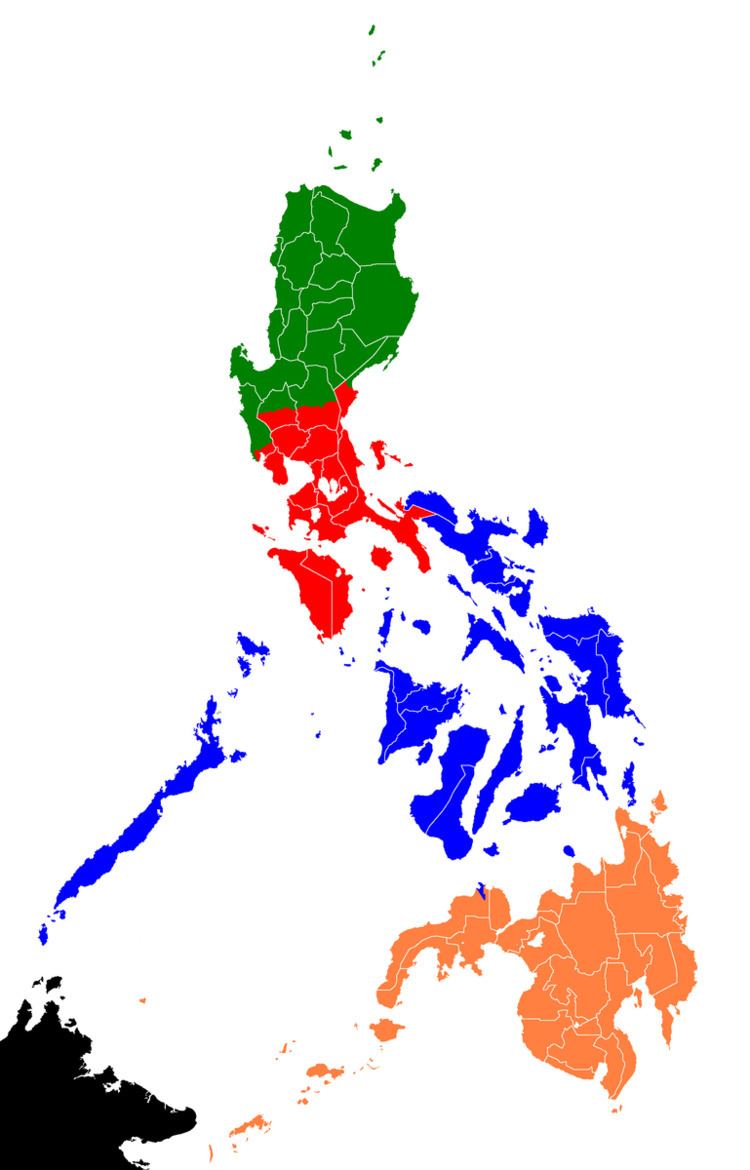 | ||
The "super" regions of the Philippines are an informal, and de facto defunct, grouping of parts of regions and provinces of the Philippines based on their economic strengths. According to Executive Order No. 561, which establishes these regions,
Contents
- North Luzon Agribusiness Quadrangle
- Metro Luzon Urban Beltway
- Central Philippines Region
- Mindanao Super Region
- Cyber Corridor
- Development Themes
- Development Champions Super Region Heads
- Development Champions Mandates
- References
"[These] groupings neither supersede current political boundaries nor alter the regional development councils as established by existing laws and issuances."
The creation of "super" regions was first proposed by the President Gloria Macapagal-Arroyo in her sixth State of the Nation Address to group the selected regions/provinces by their economic strengths. Each "super" region is headed by a Development Champion.
North Luzon Agribusiness Quadrangle
Metro Luzon Urban Beltway
or simply "Luzon Urban Beltway."
Central Philippines Region
also known as Tourism Super Region.
The Tourism Super Region is a concept of development plan of the government. Under this concept, the government intends to focus development and investments on tourism related projects. This Super Region is actually a cluster of five regions plus some parts of the Caraga Region. It boasts of a wide stretch of beachline, surfing spots, caves, lakes, and historical sites.
Included in the plan is building the infrastructures such as airports, roll-on-roll-off seaports, bus terminals and hotels. Aside from Mactan-Cebu International Airport, the government intends to build international airport in each component region. Already, the Panglao International Airport in Bohol in Central Visayas has begun development, the new Legazpi International Airport in Daraga, Albay for the Bicol Region is in its initial phase while the unutilized Guiuan Airport in Guiuan, Eastern Samar is being planned to be converted into an international airport for Eastern Visayas region. Kalibo Airport which is still a categorized as a domestic airport, is now open to international flights from Incheon, South Korea due to increasing Korean tourists flocking to Boracay Island. The Bacolod-Silay International Airport in Silay City is designated to serve the whole Negros Island Region, while the new Iloilo International Airport in Cabatuan, Iloilo, is designated as the international airport for Western Visayas region in tandem with Kalibo Airport.
Mindanao Super Region
also known as "Agribusiness Mindanao" Super Region.
Cyber Corridor
Development Themes
The "super" regions shall have the following primary, through not exclusive, development themes:
Development Champions (Super Region Heads)
The Development Champions are the following:
Development Champions Mandates
Each "super" region shall have a designated Development Champion whose mandate is to:
